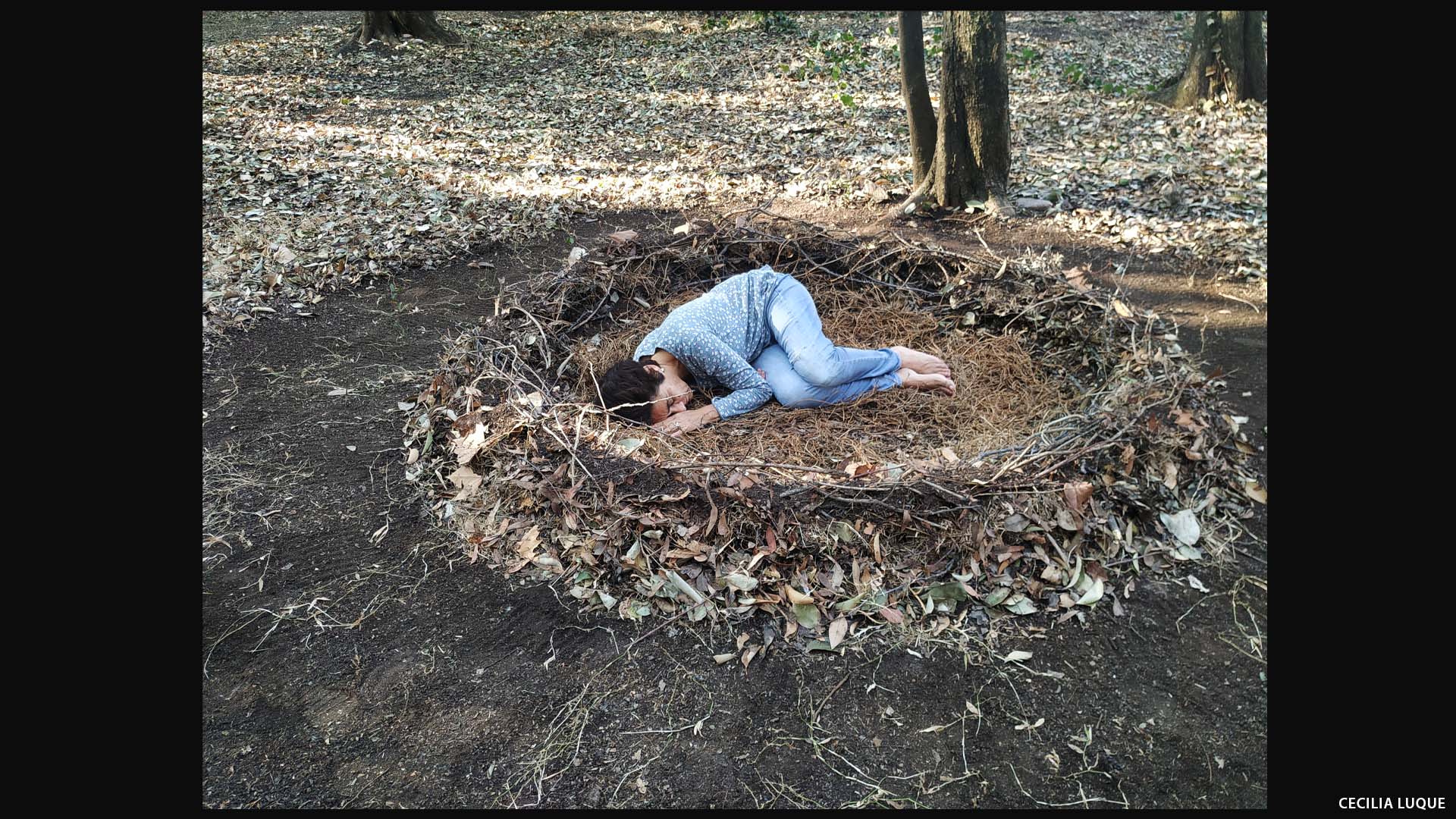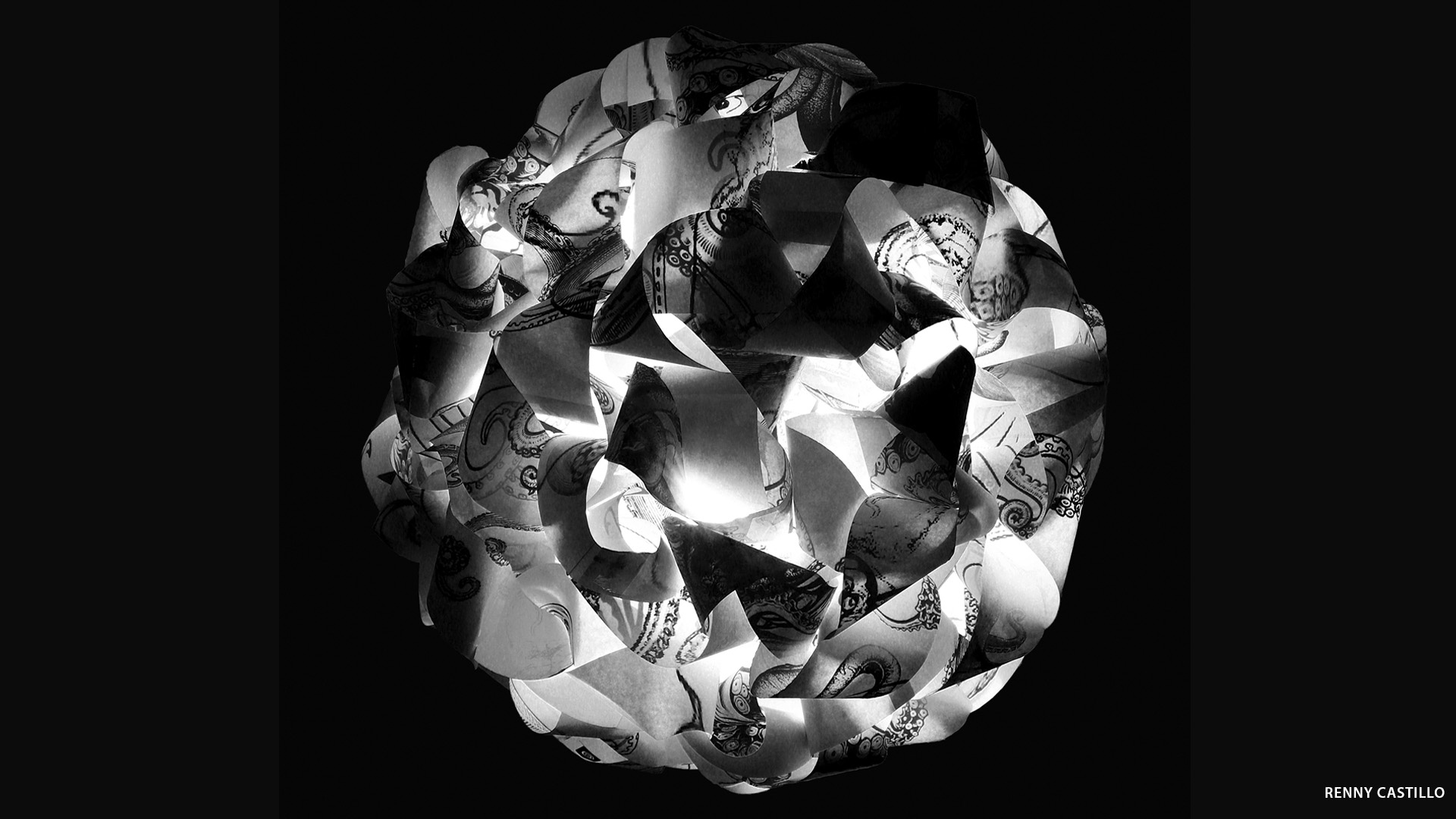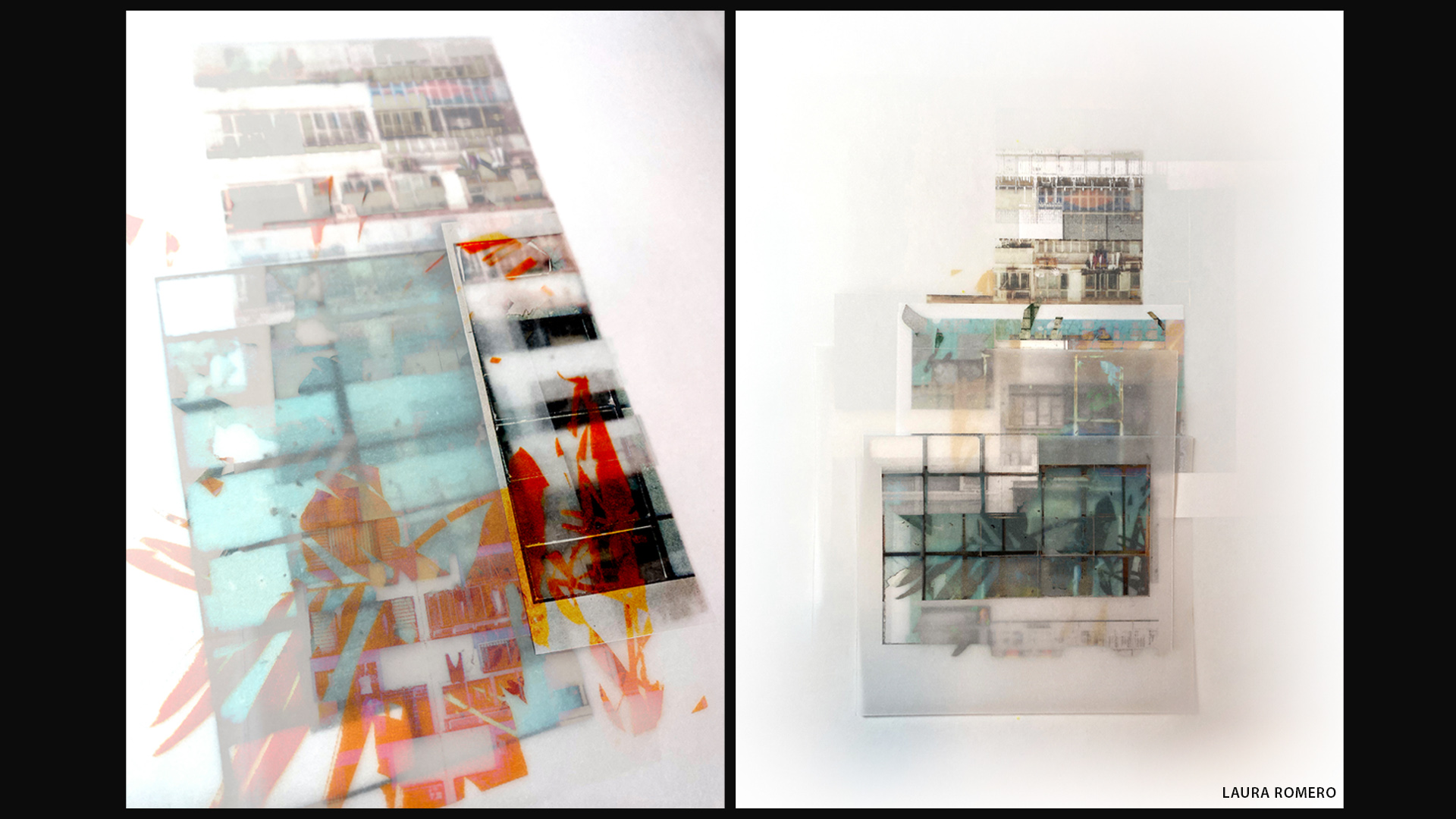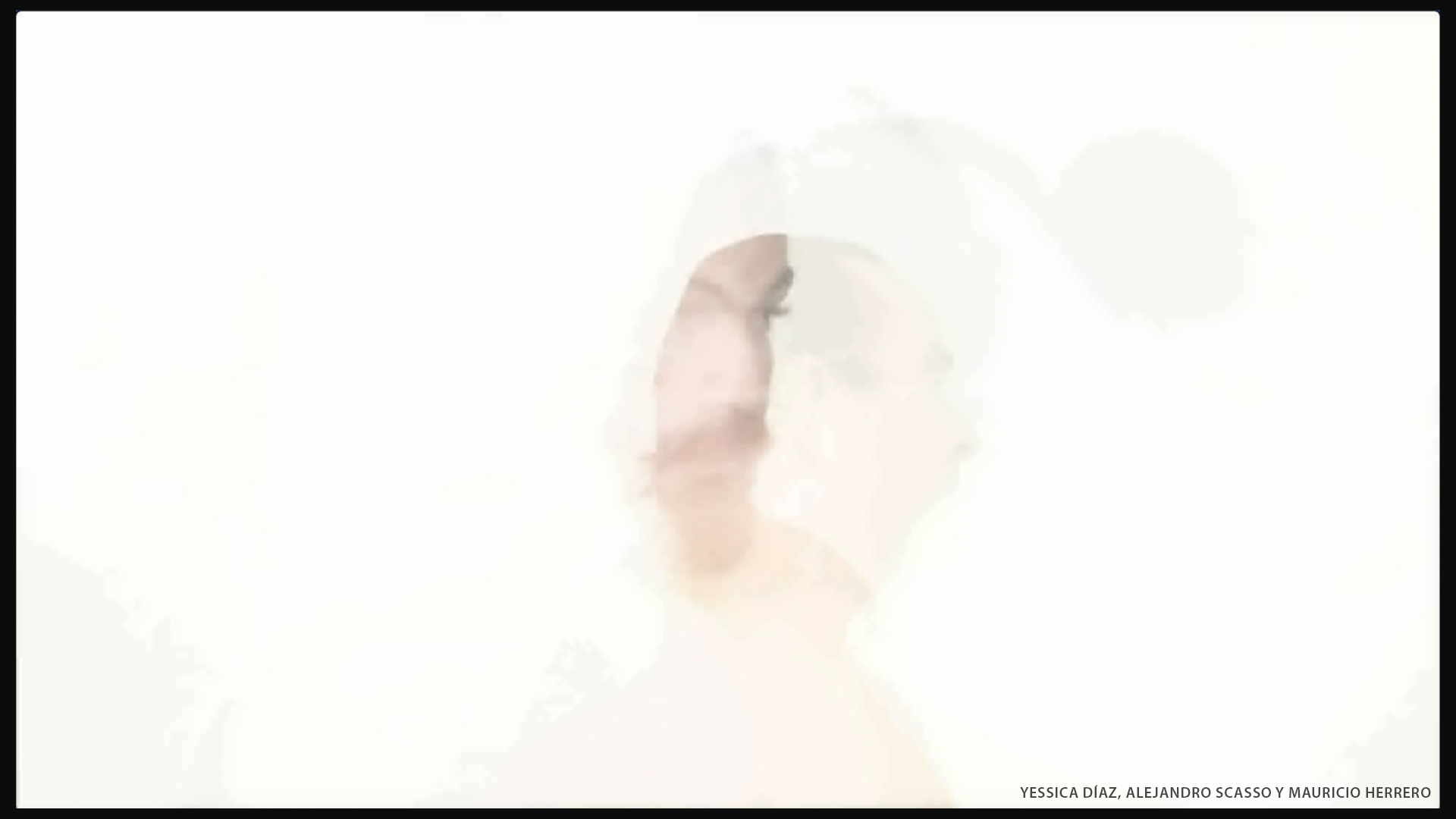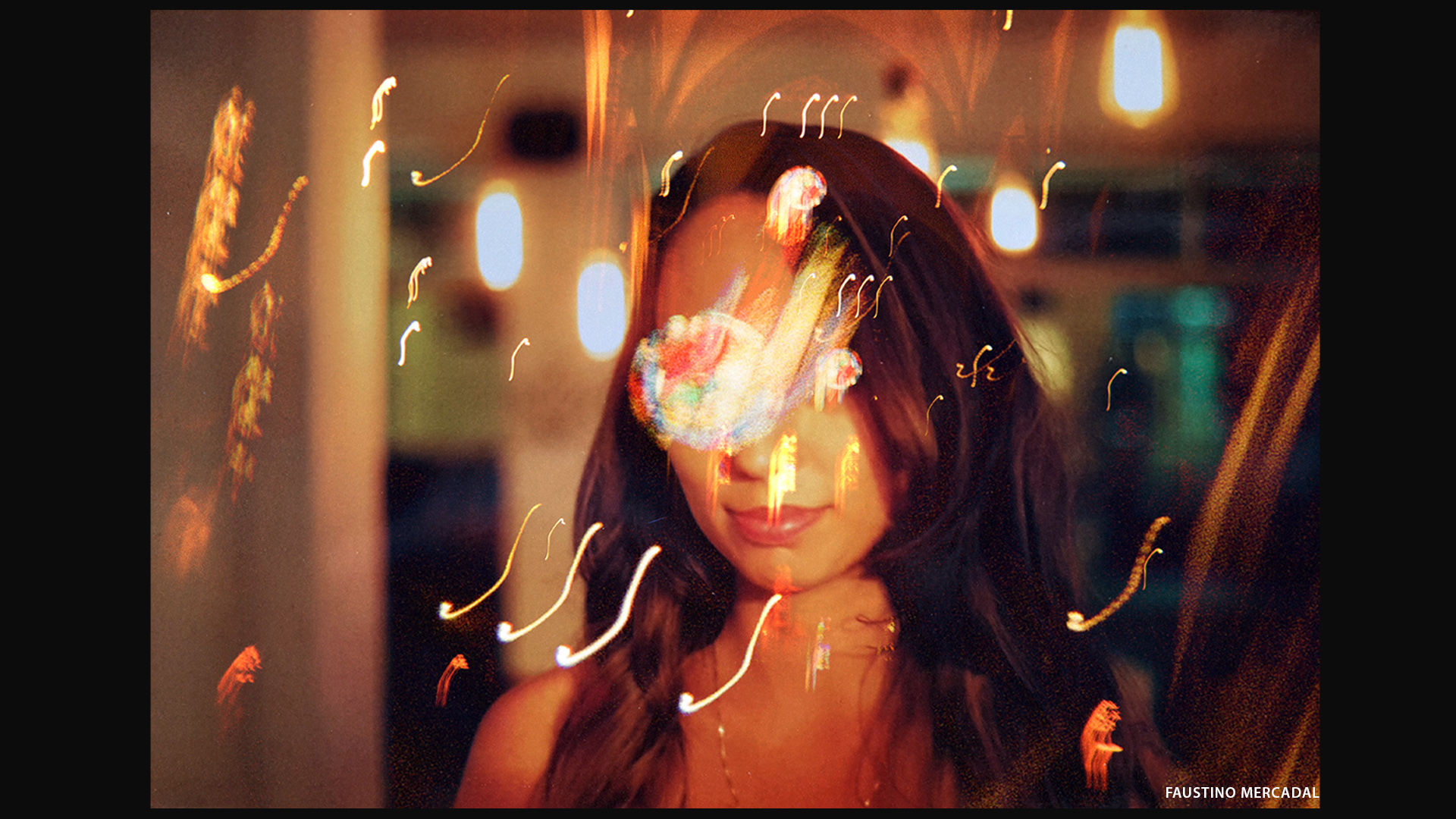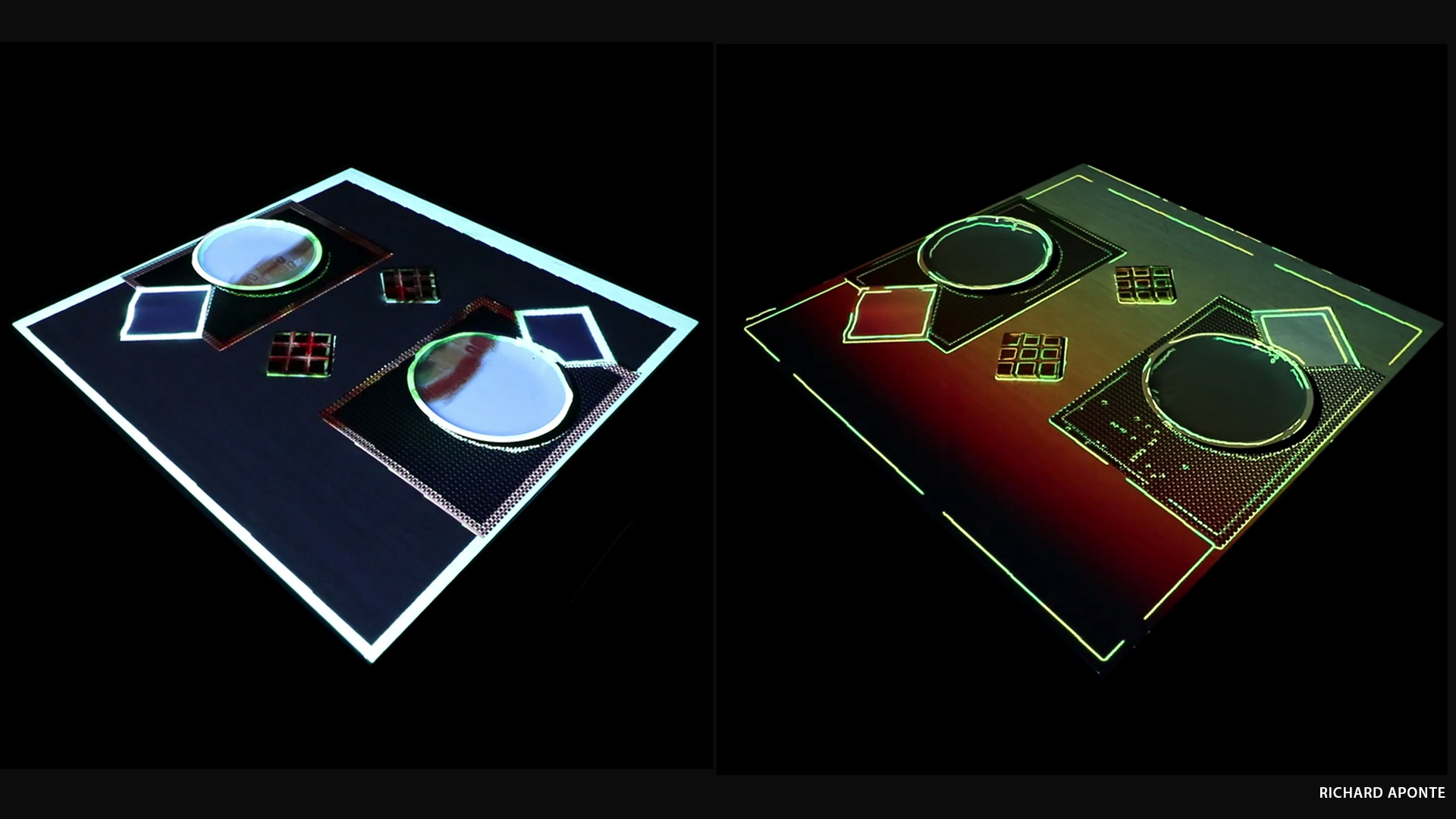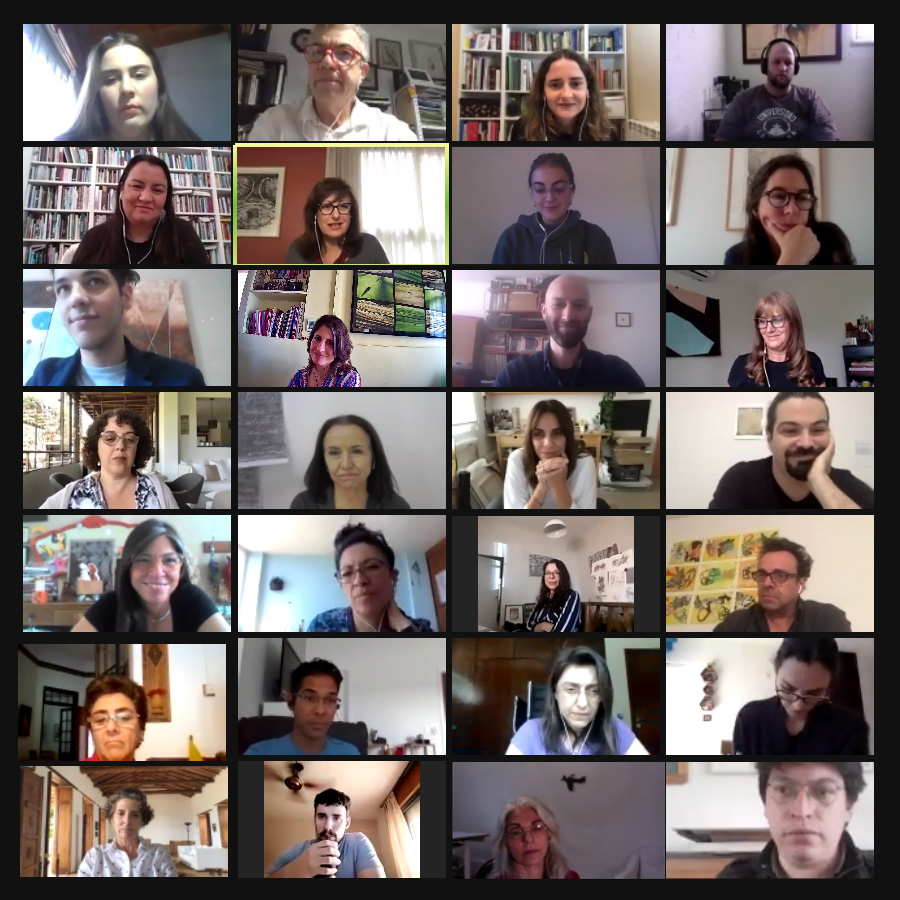Artists
Argentina
Carla Beretta
Together Apart: #Nest
14.10.20 04.11.20
I work from my own experiences: daily displacements and trips, personal relationships and emotional ties, what I see and feel in nature and in society. I use the materials that surround me, such as papers, fonts and designs; tools, materials and everything that belongs to the world of graphics; I also use the fabrics, qualities, textures and patterns that are part of the textile universe.
I take photos, I print fabrics and papers, I make objects with these materials and I also make instalations with them. However, even with this dominance, I do not feel exclusively inserted in any specialty, but I act, very generically, as a visual artist.
CARLA ABOUT TOGETHER APART: NEST
I reflected on my nest and the collective nests. Many words came to my head; shelter, refuge, support, ground, house, tree, root, flight, water, sun, air, fire, family, nation, planet. I imagined the Nest as a web woven by all of us who inhabit the Planet, built in layers that overlap in space and time. Plot that for various reasons has been breaking. I related it to Ecosophy, the broken plot reflected in the burning of the wetlands in the Paraná River, my city, my nest.
The colors of the Paraná are beautiful, brown, green; When the sun hits it, the river turns silver gray and the pink flower of the Irupé bursts into the landscape. My nest is part of the great network of nests that make up planet Earth. Our Great Nest. In it I am a point, a stitch.
I believe that this web of nests not only sustains me but also constitutes me. I am my nest. The plot that nests me, the nest that plots me. A point, a stitch, the colors of the Litoral.
BIO
Carla Beretta
1965 | Rosario, Argentina
STUDIES
1988 | Visual Arts teacher, Escuela Provincial de Artes Visuales Manuel Belgrano, Rosario, Argentina
EXHIBITIONS
2020 | Nocturnos-Gabelich Contemporaneo, Rosario, Argentina
2019 | IV Biennial of Contemporary Art of Jerusalem, Jerusalem, Israel
2018 | Impact 10, Santander, Spain
2015 | Let’s play, Cad2 College of Architects, Rosario, Argentina
2014 | Water / lava, A work an artist urban art space, Bs As, Argentina
RESIDENCIES
2020 | Residence in Residences Phase I, Rosario, Argentina
2020 | Together Apart, Proyecto ´ace, Bs As, Argentina
2014 | Cycles, Proyecto ´ace, Bs As, Argentina
2013 | The hanging ones, Proyecto ´ace, Bs As, Argentina
2012 | Crossover, Proyecto ´ace, Bs As, Argentina
AWARDS
2019 | Mention in the I Edition of the International Biennial of Engraving and Printed Art, BIGAI, Palacio Ferreyra, Córdoba, Argentina
2016 | Mention in the 61 Manuel Belgrano Hall, Eduardo Sívori Museum of Plastic Arts, Bs As, Argentina
2013 | Mention in the Artist’s Book Salon of the Textile Art Center, Bs As, Argentina
OTHERS
2017 | 106 National Visual Arts Salon, Palais de Glace, Bs As, Argentina
2016 | 105 National Hall of Visual Arts, Palais de Glace, Bs As, Argentina
2016 | 61 Manuel Belgrano Room, Eduardo Sívori Museum of Plastic Arts, Bs As, Argentina
2016 | XXIV Biennial of Tapestry, Eduardo Sivori Plastic Arts Museum, Bs As, Argentina
2015 | 104 National Salon of Visual Arts, Palais de Glace, Bs As, Argentina



Related Activities
Exhibitions, Together Apart
#2 | NEST: results
Artists in dialogue
09.12.20
During 2020, we carried out the first two sessions of Together Apart. The first session took as a conceptual and practical framework the REFUGE and the second, the NEST. Through those starting points, both of which refer to caring atmospheres and structures for coexistence, we were able to think and create in a wide variety of directions and layers. We reflected on our pandemic context, a situation for which we had to find ourselves in the virtual non-space, but also a situation thanks to which people from many different countries were able to work simultaneously. Assuming this complex situation, more than 20 participants per session created new pieces –some in exercise format–, took up projects that they had already worked on in the past or collectively set out to create new projects that will continue to develop beyond the scope of our meetings. This exhibition, virtual as well, reflects what the artists produced during this program.
CURATORIAL ESSAY
by Daniela Ruíz Moreno [Curator-in-residency]
Taking these refuge and nest issues also in their complexity, we asked ourselves questions that made each of the participants involve their personal experiences, memory, memories and experiences from each of their territories. We addressed questions that sought to keep us in constant movement; at times we went through very optimistic or pessimistic visions about the possibility or necessity of having a shelter or a nest, and at other times, we were able to articulate more complex visions, enduring in intermediate and liminal states. For both, we took as a theoretical structure of support and dialogue the thought of Félix Guattari presented in The Three Ecologies (1989). His ethical-political approach that highlights the molecular domains of sensitivity, intelligence and desire, as well as his articulation of the three ecological registers (environment, social relations and human subjectivity), helped us to expand our creations and thoughts in relation to shelter and nest.
During the second session –nest– the gaze towards natural structures was also very present. We watched and learned about different types of nests made by birds or protective structures for other animals. We thought of the house and the workshop as nests. The diversity in age and origin of the artists allowed a great richness of reflections on different states in relation to the nest. We spoke of nests from the past, nests that we are building in the present, nests that are no longer nests since they oppress or suffocate and of new nests that we imagine or wish to build in the future. Projects were presented that included the use of organic materials, creations with what was available in the workshop, project of shared files, new photographic views on everyday life, new views on the past and even reflections on language as a generator of identity as well as limiting structure. We went through different sensations in relation to the nests, some presented it as an impossible state to reach, others as a space full of melancholy and others, instead, as structures of freedom where we could explore the becoming of existence. Other works presented the feelings of paranoia that can arise when human nests or states of refuge are threatened and the feelings of discomfort when it feels like losing the intimate conditions of a nest.
Together Apart has functioned as a program that opened up possibilities for meeting and collaborative creation. It has made possible the creation of new rhythms and synchronies for a limited time but whose reverberations and echoes continue to affect in unexpected directions.
Related artists
- Gabriela Agüero
- Pilar Aparicio Uribe
- Richard Aponte
- Alejandra Basañes
- Carla Beretta
- Marcela Casals
- Renny J. Castillo Umpierre
- Carmen Díaz
- Yessica Díaz
- Isa Duarte
- Vanessa Freitag
- Camilo Gutiérrez
- Helena Kanaan
- Denise Koziura
- Jociele Lampert
- Cecilia Luque
- Carlos Marin
- Faustino Mercadal
- Laura Romero
- Nerina Rosende
- Alejandro Scasso


